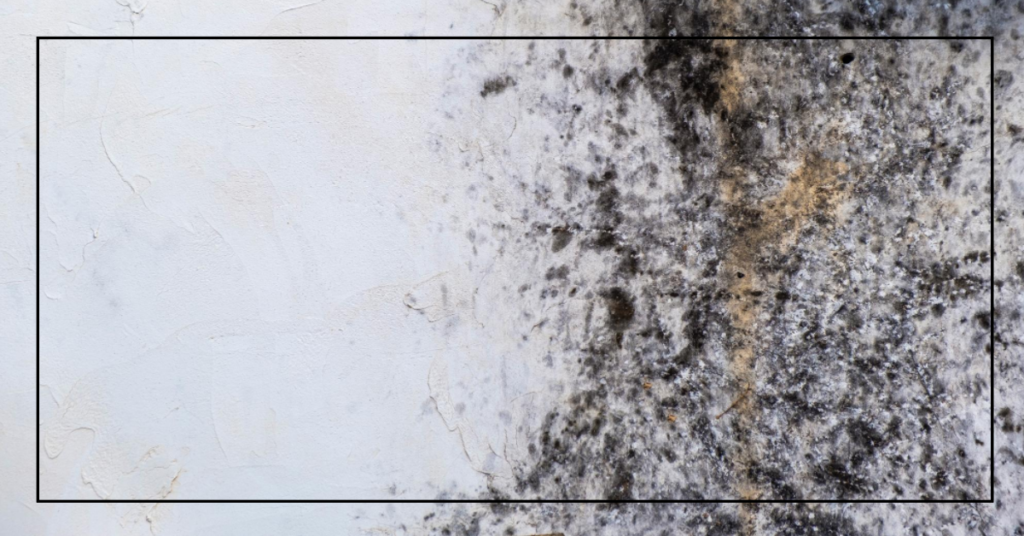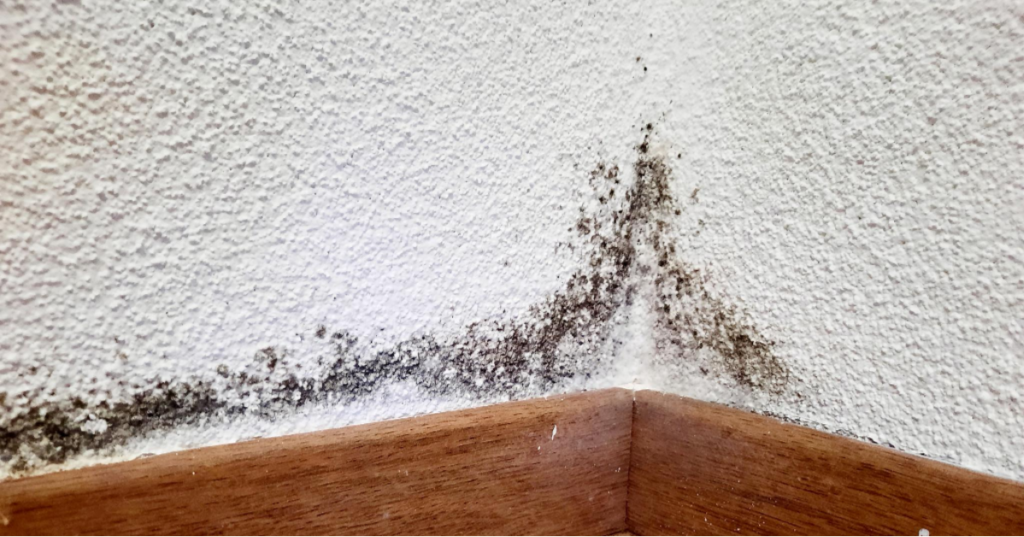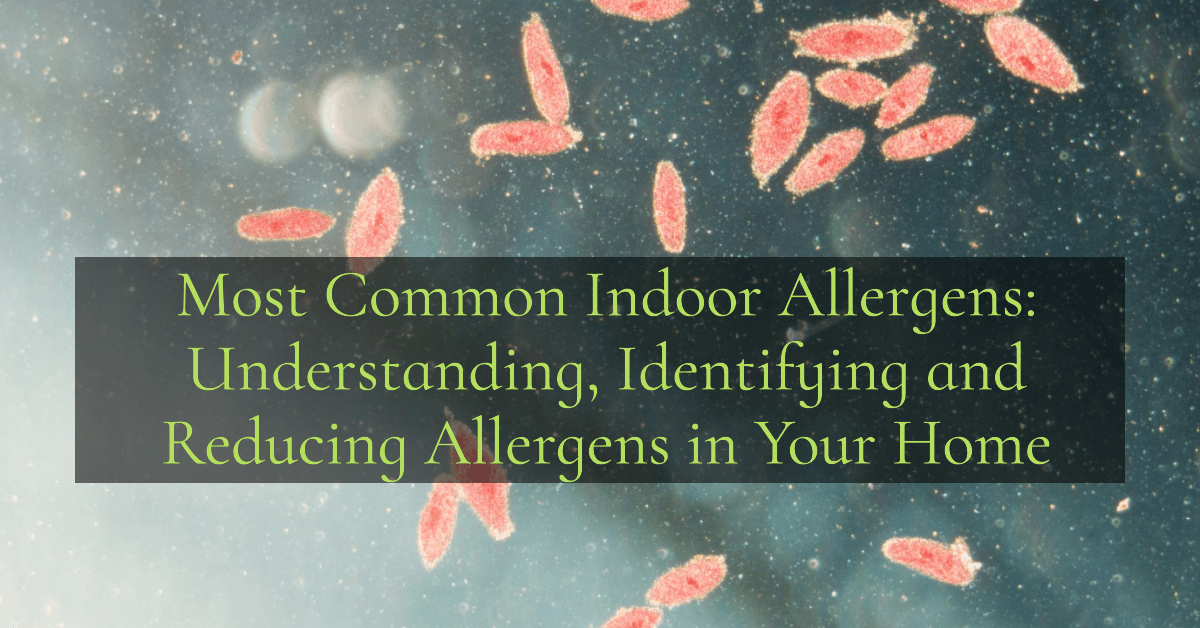Most Common Indoor Allergens in your home can be invisible adversaries, quietly triggering sneezes, coughs and discomfort. Understanding, identifying, and reducing these allergy triggers is paramount for anyone seeking a haven of clean, allergen-free air. In this comprehensive guide, we’ll go through indoor allergens list that can infiltrate your home, exploring their sources and the health risks they pose, and ultimately revealing effective strategies for reducing allergens in the home.
If you’ve ever experienced a sudden sneeze when you step inside your home or watched a loved one grapple with an unexplained allergic reaction, you’re well aware of the profound impact home allergens can have. These allergens, ranging from microscopic dust mites to pollen and pet dander, have the potential to turn your home into a minefield for allergy sufferers. But fret not, for knowledge is your most potent weapon. By gaining a deeper understanding of these Most Common Indoor Allergens List, you can take proactive measures to protect your family’s health and ensure your home is a sanctuary for all.
We’ll explore their origins, their consequences for health, and the techniques and technology at your disposal for cleaning allergens in the home. Whether you’re an allergy sufferer looking for relief or simply striving to maintain a healthy living environment, this guide equips you with the knowledge and strategies needed to turn the tide against allergens in your home.
Most Common Indoor Allergens
Indoor allergens are substances that can cause allergic reactions when inhaled, touched, or ingested. These allergens are often common in household environments and can be particularly troublesome for those with allergies or asthma. Here are some of the most common indoor allergens list:
| Most common Indoor allergens list | Common Sources | Health Effects |
|---|---|---|
| Dust Mites | Mattresses, pillows, upholstery | Respiratory issues, allergies |
| Pet Dander | Skin, fur, feathers of pets | Allergic reactions |
| Pollen | Outdoor air that enters your home | Hay fever, allergic rhinitis |
Understanding these common indoor allergens is the first step in managing and reducing your exposure. Now, let’s delve into each of these allergens in more detail.

Health Risks Associated with Allergens
Allergens in your home can lead to a range of health issues. Understanding the potential health risks is crucial for managing allergies effectively. Here are some of the health problems associated with Home allergens:
| Indoor allergens list | Health Risks |
|---|---|
| Dust Mites | Respiratory issues, allergic rhinitis, asthma exacerbation |
| Pet Dander | Allergic reactions, asthma attacks |
| Pollen | Seasonal allergies, hay fever |
As you can see, different allergens can trigger various allergic reactions and exacerbate existing health conditions. Dust mites, for example, are a common cause of respiratory issues and can worsen asthma symptoms. Pet dander can lead to allergic reactions and even asthma attacks in susceptible individuals. Pollen is a frequent outdoor allergen that can find its way indoors, causing seasonal allergies and hay fever.
Understanding these health risks will empower you to take effective measures to reduce allergen exposure and create a safer environment, especially if you or your loved ones suffer from allergies or respiratory conditions.

Identifying Allergens in Your Home
Before you can effectively go into reducing allergens in the home, you need to identify their presence in your home. Here are some steps you can take to identify and confirm the presence of most common indoor allergens:
- Consult an allergist: If you suspect allergies but are unsure of the specific triggers, consulting an allergist for testing can help pinpoint the culprits.
- Observe symptoms: Pay attention to any symptoms that worsen or appear when you’re at home. This could include sneezing, coughing, itchy eyes, or congestion.
- Inspect common sources: Dust-prone areas, your pets, and areas with frequent pollen exposure are good places to start your investigation.
- Use allergen test kits: There are test kits available that can confirm the presence of allergens in your home.

Dust Mites: A Common Culprit
Dust mites are microscopic arachnids that feed on dead skin cells, and they are a significant indoor allergen source. Here’s a closer look at dust mites and how to reduce their presence in your home:
| About Dust Mites | Reducing Dust Mites |
|---|---|
| Dust mites are tiny, translucent creatures that thrive in warm and humid environments. | To reduce dust mites, maintain lower humidity levels in your home through the use of dehumidifiers. |
| They are most commonly found in bedding, mattresses, pillows, and upholstered furniture. | Wash bedding and pillowcases regularly in hot water to kill dust mites. |
| Dust mite waste and body fragments are potent allergens, triggering allergic reactions and asthma. | Use allergen-proof covers on pillows and mattresses to prevent dust mite infestations. |
Dust mites can be particularly problematic for individuals with asthma and allergies. Understanding their behavior and implementing strategies to reduce their presence in your home is key to managing dust mite allergies effectively.

Dealing with Pet Allergens
Pets bring joy and companionship, but they can also introduce allergens into your home, primarily through their dander. Here’s how you can manage pet allergens:
| Understanding Pet Dander | Reducing Pet Allergens |
|---|---|
| Pet dander consists of tiny, even smaller than pollen, flecks of skin shed by cats, dogs, rodents, birds, and other animals with fur or feathers. | Regularly groom and bathe your pets to minimize dander production. |
| It can become airborne, settle on surfaces, and trigger allergic reactions. | Use high-efficiency particulate air (HEPA) filters in your home to capture airborne pet dander. |
| Pet dander is a common allergen that can lead to allergic rhinitis, hives, or asthma symptoms. | Wash your pet’s bedding and toys frequently, and vacuum your home with a HEPA filter-equipped vacuum cleaner. |
If you have pets and family members with allergies, it’s essential to strike a balance between enjoying the company of your furry friends and managing pet allergens effectively.

Managing Pollen Allergies
Pollen allergies are prevalent, and symptoms can range from mild sneezing to severe respiratory distress. Here’s how to deal with pollen allergens:
| Understanding Pollen Allergies | Reducing Pollen allergies |
|---|---|
| Pollen is a fine, powdery substance produced by plants for reproductive purposes, and it can trigger allergies when inhaled or come into contact with the skin. | Keep windows closed during high pollen seasons and use air conditioning with clean filters. |
| Seasonal allergies often result from exposure to pollen from trees, grasses, or weeds. | Shower and change clothes after spending time outdoors to remove pollen residue. |
| Pollen can be carried indoors on clothing, shoes, and pets. | Consider landscaping choices that involve fewer pollen-producing plants in your yard. |
Understanding the type of pollen you are allergic to and the timing of its release can help you take preventive measures to reduce exposure and manage your pollen allergies effectively.
Controlling Indoor Humidity
Humidity levels in your home play a significant role in controlling allergens, particularly dust mites and mold. Here’s how to manage indoor humidity:
| Impact of Humidity on Allergens | Humidity Control Strategies |
|---|---|
| Higher humidity levels provide an ideal environment for dust mites and mold to thrive. | Use dehumidifiers in damp areas like basements and crawl spaces to maintain humidity levels between 30-50%. |
| Lower humidity levels can help prevent allergen growth and reduce associated health risks. | Regularly maintain and clean your dehumidifier to ensure its effectiveness. |
| Controlling humidity is vital in minimizing indoor allergens like dust mites, mold, and mildew. | Properly ventilate areas such as bathrooms and kitchens to prevent excess moisture buildup. |
By managing indoor humidity levels, you can create an environment that is less hospitable to most common indoor allergens, thus reducing allergy symptoms.
Effective ways for reducing allergens in the home
Preventing allergens from spreading in your home is a key part of managing allergies. Consider the following allergen-proofing strategies:
| Allergen-Proof Bedding and Covers | HEPA Filters and Air Purifiers | Regular Cleaning Routines |
|---|---|---|
| Invest in allergen-proof mattress and pillow covers to prevent dust mites and allergens from infiltrating your bedding. | Use HEPA (High Efficiency Particulate Air) filters in your home’s heating and cooling systems to trap allergens. | Create a cleaning schedule for your home, including vacuuming, dusting, and washing bedding regularly. |
| Wash sheets, pillowcases, and blankets in hot water at least once a week to kill dust mites. | Consider using air purifiers in bedrooms and other commonly used areas to reduce airborne allergens. | Use microfiber cloths and mops for cleaning, as they can capture more allergens than traditional cleaning materials. |
| Remove stuffed animals and heavy drapes from bedrooms, as they can collect dust and allergens. | Clean or replace air purifier filters as recommended by the manufacturer. | Consider wearing a mask and gloves while cleaning to reduce allergen exposure. |
By following these strategies, you can create a home environment that’s less likely to harbor and spread allergens, leading to improved air quality inside your home.
Allergens in Different Seasons
Allergen triggers can vary by season. Understanding the seasonal patterns of allergens can help you take the right precautions:
| Spring Allergens | Fall Allergens | Managing Allergies Throughout the Year |
|---|---|---|
| In spring, tree pollens are a common allergen. Keep windows closed and avoid outdoor activities on high pollen days. | Fall brings ragweed pollen allergies. Use high-efficiency filters and clean air ducts to reduce exposure. | Stay informed about local allergen forecasts and adjust your allergen reduction strategies accordingly. |
| Consider landscaping with low-allergen plants in your yard to minimize exposure to pollen. | Fall also sees an increase in indoor allergens like mold and dust mites. Maintain humidity control. | Regularly check and clean your home’s ventilation systems to prevent allergen buildup. |
| If you have allergies to spring or fall allergens, consult an allergist for personalized treatment options. | Consult an allergist if your fall allergies are severe or persistent for proper diagnosis and management. | Stay on top of cleaning and maintenance year-round to keep allergens at bay. |
Adapting your allergen management strategies to the seasons can help you enjoy a more comfortable and symptom-free life year-round.
Allergens Free Home Design
Designing your home with allergen control in mind is a proactive approach to managing allergies:
| Flooring Choices and Allergen Control | Pet-Friendly Design Solutions | Allergen-Sensitive Home Improvement Tips |
|---|---|---|
| Opt for hard flooring surfaces like hardwood or tile, which are easier to clean and don’t trap allergens like carpets. | Create pet zones with easy-to-clean surfaces and use pet gates to limit their access to certain areas of your home. | Seal any cracks or gaps in walls and floors to prevent allergens from entering your home. |
| If you prefer carpet, choose low-pile options and vacuum regularly with a HEPA filter vacuum cleaner. | Bathe and groom your pets regularly to reduce shedding, and use washable pet beds and covers. | Invest in proper insulation and air sealing to keep outdoor allergens from infiltrating your home. |
| Use washable rugs and mats in entryways to capture allergens brought in from outdoors. | Consider non-toxic paint and finishes for home improvement projects to minimize chemical allergens. | Opt for furniture with washable and removable covers to easily clean and remove allergens. |
By making informed choices when designing or renovating your home, you can significantly reduce common indoor allergens exposure and maintain better indoor air quality.
Coping with Severe Allergies
For individuals with severe allergies from home allergens, managing symptoms and seeking professional guidance is crucial:
| Severe Allergic Reactions | Allergy Medications and Treatments | Allergy Management Plans |
|---|---|---|
| In the case of severe allergic reactions, such as anaphylaxis, seek immediate medical attention by calling medical emergency number. | Consult an allergist for allergy testing to identify specific allergens and develop a tailored treatment plan. | Work with your allergist to create a comprehensive allergy management plan that includes allergen avoidance, medication, and emergency response. |
| Learn to recognize the signs of anaphylaxis, which may include difficulty breathing, swelling, and a drop in blood pressure. | Common allergy medications include antihistamines, decongestants, corticosteroids, and epinephrine for severe reactions. | Ensure you have quick access to epinephrine auto-injectors if you have a history of severe allergies. |
| Individuals with severe allergies should wear a medical alert bracelet and inform close contacts about their allergies. | Allergy shots (immunotherapy) may be recommended for long-term desensitization to allergens. | Educate family members, friends, and caregivers on how to assist in case of an allergic reaction. |
Severe allergies require vigilance and preparedness, and it’s essential to work closely with medical professionals to manage them effectively.
Children and Allergen Exposure
Children are particularly vulnerable to allergens, and it’s important to create allergen-safe spaces for them:
| Childhood Allergies | Allergen-Free Nurseries and Play Areas | Creating Allergen-Safe Spaces |
|---|---|---|
| Many allergies develop during childhood, so it’s essential to minimize allergen exposure from an early age. | Designing an allergen-free nursery starts with using allergen-proof bedding and crib encasements. | Educate your child about their allergies, how to avoid triggers, and the importance of hygiene. |
| Protect your child from common allergens like dust mites and pet dander by following allergen-reduction strategies. | Use an air purifier in the nursery to filter the air, keeping it clean and free from airborne allergens. | In shared spaces, such as the family room, use allergen-resistant furniture and clean regularly. |
| Ensure your child’s school and caregivers are aware of their allergies and have necessary medications on hand. | Teach your child to practice good hand hygiene and avoid touching their face, especially during allergy seasons. | Regularly wash and sanitize toys, especially stuffed animals, which can harbor dust mites and pet allergens. |
Creating an allergen-safe environment for children is vital to their well-being and can prevent the development of allergies or asthma in the long run.
The Role of Clean Air in Allergy Management
Clean air plays a significant role in managing allergies effectively. Here’s how you can use technology to combat indoor allergens:
| Air Purifiers and Their Effectiveness | Filtering Allergens from Indoor Air | Using Technology to Combat Allergies |
|---|---|---|
| High-efficiency particulate air (HEPA) purifiers can effectively capture home allergens and improve indoor air quality. | Regularly change the filters in your HVAC system to prevent allergens from circulating through your home. | Smart home devices can help monitor and control indoor air quality, providing real-time data and alerts. |
| Position air purifiers strategically in allergy-prone areas, such as bedrooms and the living room, for optimal results. | Use high-quality air filters with a MERV (Minimum Efficiency Reporting Value) rating of 11 or higher to trap smaller allergenic particles. | Consider investing in smart thermostats and air quality monitors to maintain an ideal indoor environment. |
| Ensure proper ventilation in your home to prevent the buildup of indoor pollutants, including allergens. | Use standalone air purifiers with HEPA filters in bedrooms to improve sleep quality and reduce nighttime allergy symptoms. | Smart cleaning robots can help maintain a dust-free environment by regularly vacuuming and mopping floors. |
By harnessing the power of technology and maintaining a clean indoor environment, you can significantly reduce allergen exposure and alleviate allergy symptoms.
Conclusion
In conclusion, understanding, identifying, and reducing allergy triggers is paramount for individuals and families looking to live healthier lives free from the burden of allergies. By recognizing most common indoor allergens and implementing effective strategies to minimize exposure, you can breathe easier, sleep better, and enjoy life without the constant irritation of allergy symptoms.
From taking steps like reducing allergens in the home to using technology to maintain clean indoor air, there are numerous ways to combat allergies. With the right knowledge and practical solutions, you can transform your living space into an allergen-free haven, improving your overall quality of life and well-being.
Don’t let allergies hold you back. Take action today and start your journey toward an allergy-free and healthier tomorrow.
FAQ
What are the most common indoor allergies?
The most common indoor allergies include:
1) Dust mites
2) Pet dander (from cats, dogs, or other animals)
3) Mold spores
4) Cockroach droppings
5) Pollen (if it’s carried indoors)
What am I suddenly allergic to in my house?
Developing sudden allergies to indoor allergens can be caused by various factors, but common culprits include dust mites, pet dander, mold, and even certain cleaning products or household chemicals. Allergies can develop over time due to exposure.
What are examples of indoor allergens?
Indoor allergens List include:
Dust mites,
Pet dander,
Mold spores,
Cockroach droppings,
Pollen (if it’s brought indoors),
Indoor plants and their mold spores,
Smoke and secondhand smoke.
What are uncommon indoor allergies?
Uncommon indoor allergies can vary depending on an individual’s sensitivities, but some less common indoor allergens include:Allergies to certain foods that can be present in the home.
Allergies to specific types of fabrics or textiles.
Allergies to ingredients in household products like cleaning agents.
Allergies to insects like dust mites or certain types of beetles.
What is giving me allergies in my house?
Allergies in your house can be triggered by various indoor allergens, such as dust mites, pet dander, mold, pollen brought indoors, or even certain cleaning products. Identifying the specific allergen may require allergy testing.
How do you tell if your house is giving you allergies?
You can suspect your house is causing allergies if you experience symptoms like sneezing, runny nose, itchy or watery eyes, coughing, or skin rashes when you’re at home. To confirm the source of allergies, consider allergy testing.
How do you check for allergens at home?
To check for allergens at home, you can:
Look for visible signs of mold or moisture issues.
Use allergen test kits for specific allergens.
Keep an eye on your symptoms and when they occur, which may provide clues about the allergen source.
Consult an allergist for allergy testing to identify specific triggers.
DheerajSonwane is a dedicated writer with expertise in air purification technologies. He focuses on providing well-researched content to help readers improve indoor air quality in homes and businesses. As the lead writer at AirPurifierMaster.com, Dheeraj offers practical advice his insightful reviews guide individuals in choosing the best air purifiers for their needs.


1 thought on “Most Common Indoor Allergens: Understand, Identify and Reduce Allergens in Your Home”